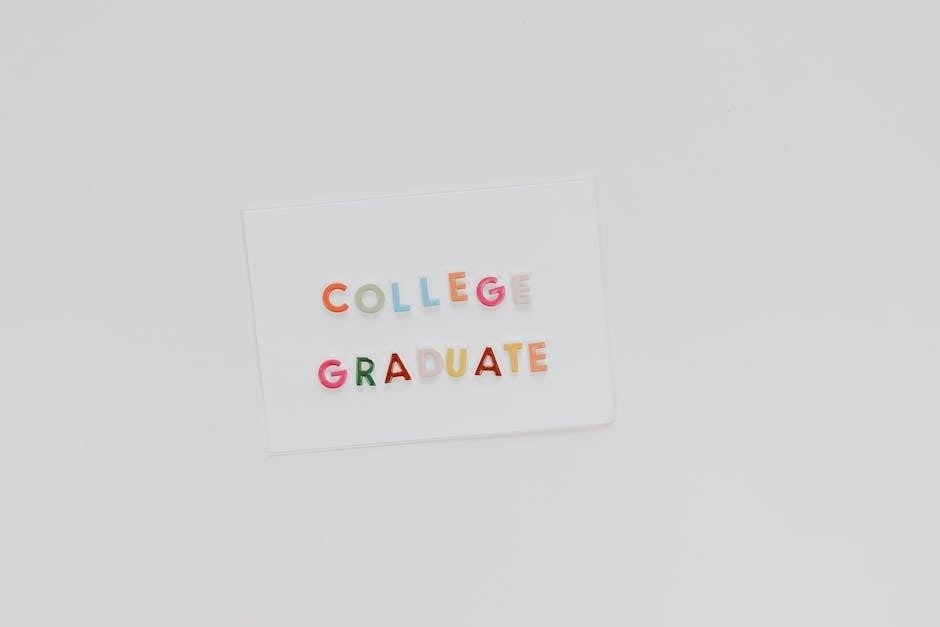Le Futur Simple is a French tense used to describe future actions or events. It is formed using specific verb endings (-ai, -as, -a, -ons, -ez, -ont).
Regular and irregular verbs follow distinct conjugation patterns, with exercises like gap-fill and multiple-choice questions available in PDF formats for practice.
Mastering Le Futur Simple enhances fluency in expressing future plans, predictions, and intentions in French, making it a fundamental grammar topic for learners.
Various PDF resources offer exercises, including sentence completion and translation tasks, to help learners grasp its usage and conjugation effectively.
Definition and Usage
Le Futur Simple is a French verb tense used to express future actions or events. It is formed by adding specific endings (-ai, -as, -a, -ons, -ez, -ont) to the infinitive form of the verb.
For example, the verb donner becomes je donnerai, tu donneras, and il donnera. This tense is used for actions that will occur in the future, such as predictions, plans, or intentions.
It is often contrasted with le futur proche, which uses aller + infinitif for near future actions. PDF exercises, like conjugation drills and sentence completion tasks, help learners master its usage and structure effectively.
Importance in French Grammar
Le Futur Simple is essential in French grammar as it allows speakers to express future actions clearly. It is distinct from le futur proche, which refers to the near future.
Mastery of this tense enhances communication, enabling precise expression of plans, predictions, and intentions. Regular practice with PDF exercises, such as conjugation drills and sentence completion, reinforces understanding and usage.
Understanding Le Futur Simple is crucial for constructing grammatically correct sentences and conveying future events effectively in both spoken and written French.
Conjugation Rules for Le Futur Simple
Regular verbs form Le Futur Simple with endings: -ai, -as, -a, -ons, -ez, -ont. Irregular verbs follow unique patterns. PDF exercises provide practice for mastering these conjugations.
Regular Verbs
Regular verbs in Le Futur Simple follow predictable patterns. For -er, -ir, and -re verbs, add -ai, -as, -a, -ons, -ez, -ont to the infinitive. Example: donner becomes je donnerai.
Practice with PDF exercises, such as conjugating verbs like visiter (I will visit) or préparer (we will prepare). These drills help master endings and common verb forms.
Irregular Verbs
Irregular verbs in Le Futur Simple do not follow the standard conjugation patterns. Verbs like venir (to come) and voir (to see) have unique forms. For example, venir becomes je viendrai and voir becomes je verrai.
These verbs often require memorization due to their unpredictable endings. Some, like pouvoir (to be able), have slight stem changes, such as je pourrai and ils pourront.
Exercises in PDFs, such as identifying correct forms or completing sentences, help learners master these irregularities and improve their ability to use them correctly in context.

Key Differences Between Le Futur Simple and Le Futur Proche
Le Futur Simple uses verb endings (-ai, -as, -a, -ons, -ez, -ont) to express future actions. Le Futur Proche combines an auxiliary verb (e.g., aller) with the infinitive.
Le Futur Proche often includes specific time markers like bientôt or dans quelques minutes, while Le Futur Simple is more general, emphasizing planned or certain future events.
Structural Differences
Le Futur Simple and Le Futur Proche differ in their formation. Le Futur Simple uses verb endings (-ai, -as, -a, -ons, -ez, -ont) added to the infinitive, e.g., je mangerai. In contrast, Le Futur Proche combines an auxiliary verb (aller or être) with the infinitive, e.g., je vais manger.
Le Futur Simple is used for general future actions, while Le Futur Proche emphasizes proximity or immediacy, often with time markers like bientôt or dans quelques minutes.
Contextual Usage
Le Futur Simple is used for general future actions, such as predictions or planned events, while Le Futur Proche emphasizes immediate or certain future actions. For example, je mangerai demain (I will eat tomorrow) uses Le Futur Simple, whereas je vais manger bientôt (I will eat soon) uses Le Futur Proche. Le Futur Simple is often used with time expressions like dans quelques années or plus tard, whereas Le Futur Proche is used with maintenant or dans quelques minutes. PDF exercises often include sentence completion tasks to practice these contextual differences effectively.

Common Exercises for Practicing Le Futur Simple
Gap-fill exercises, multiple-choice questions, and sentence completion tasks are popular for mastering Le Futur Simple. These activities focus on conjugation and correct verb usage in context.
Gap-Fill Exercises
Gap-fill exercises are an effective way to practice Le Futur Simple. They involve completing sentences with the correct form of the verb in parentheses. For example, Je (visiter) Paris l’année prochaine requires the student to write “visiterai.” These exercises are widely available in PDF format and cover various verbs, both regular and irregular. They help learners focus on conjugation rules and proper tense usage. By repeatedly practicing these exercises, students build accuracy and confidence in using Le Futur Simple. Such activities are essential for reinforcing grammar skills and improving writing abilities in French.
Multiple-Choice Questions
Multiple-choice questions are a popular exercise type for practicing Le Futur Simple. They present sentences with a missing verb, offering several conjugated forms to choose from. For example, Je ______ (finir) mes devoirs demain soir might include options like “finirai” or “finis.” These exercises, often found in PDF resources, test the ability to recognize the correct conjugation of both regular and irregular verbs. They are an effective way to reinforce grammar rules and improve verb recognition. Regular practice with multiple-choice questions enhances confidence and accuracy in using Le Futur Simple.
Sentence Completion Tasks
Sentence completion tasks are an engaging way to practice Le Futur Simple. These exercises provide partial sentences with verbs in parentheses, requiring learners to conjugate them correctly. For example, Demain, j’________ (visiter) le musée avec mes amis might require writing “visiterai.” Available in PDF formats, these tasks often focus on context-specific scenarios, helping learners apply the tense in meaningful ways. They improve writing skills and reinforce the connection between verb forms and future contexts. Regular practice with sentence completion tasks builds fluency and accuracy in using Le Futur Simple effectively.

Advanced Exercises
Advanced exercises for Le Futur Simple include writing short paragraphs and translation tasks. These activities help refine mastery of the tense, ensuring proper usage in complex contexts.
Writing Short Paragraphs
Writing short paragraphs is an advanced exercise for mastering Le Futur Simple. Learners craft sentences describing future plans or hypothetical scenarios, such as “Demain, je vais…” or “Dans dix ans, j’espère…”.
This activity enhances creativity and grammar accuracy, encouraging correct conjugation and contextual use of the tense. For example, writing about future career goals or imagining life in another country.
PDF resources often include prompts like “Écris un court paragraphe sur tes projets d’avenir” to guide practice. Such exercises refine fluency and ensure proper application of Le Futur Simple in real-life situations.
Translation Exercises
Translation exercises are effective for practicing Le Futur Simple, involving converting sentences from English to French. For example, translating “I will visit Paris next year” to “Je visiterai Paris l’année prochaine”.
PDF resources provide sentences focusing on regular and irregular verbs, such as “They will call us tomorrow” becoming “Ils nous appelleront demain”.
Such exercises improve understanding of tense usage and enhance vocabulary, ensuring accurate and natural translations while reinforcing Le Futur Simple conjugation rules.

Tips for Effective Practice
Use flashcards to memorize verb conjugations and endings. Practice speaking drills regularly to build confidence. Review PDF exercises daily to reinforce Le Futur Simple concepts consistently.
Using Flashcards
Flashcards are an effective tool for memorizing verb conjugations in Le Futur Simple. Create cards with the verb in its infinitive form on one side and its conjugated form on the other. For example, donner becomes je donnerai. Regular practice with flashcards helps reinforce memory and improves recall speed. You can find pre-made flashcard sets in PDF format online, which include regular and irregular verbs. Use them daily to build familiarity with the endings (-ai, -as, -a, -ons, -ez, -ont) and master the tense efficiently.
Speaking Drills
Speaking drills are an excellent way to practice Le Futur Simple in a conversational context; Pair up with a partner or use online resources to engage in role-playing activities. For example, create scenarios where you discuss future plans or predict events using verbs like je vais voyager or nous acheterons une maison. Timed exercises can also help improve fluency. Many PDF guides include conversation prompts or dialogues to simulate real-life interactions. Regular speaking practice enhances pronunciation and confidence, making it easier to use Le Futur Simple naturally in everyday conversations. Consistency is key to mastering this essential French tense.
Mastering Le Futur Simple is essential for effectively communicating future actions in French. Regular practice with exercises from PDF resources helps build confidence and accuracy. By focusing on conjugation drills, gap-fill tasks, and speaking activities, learners can achieve fluency. The future tense is vital for expressing plans, predictions, and intentions, making it a cornerstone of French grammar. Consistent practice and review ensure long-term retention and proper usage in real-life conversations. Le Futur Simple exercises in PDF formats provide a structured approach to learning, making it accessible and efficient for all skill levels.
